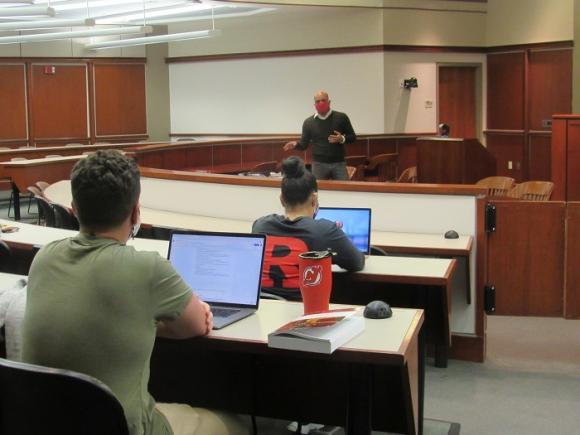Navigating the Intricacies of Test Presentations: Tips for Seamless Shipment and Compelling Debates
In the realm of lawful procedures, the art of test presentation stands as a crucial component of success. As attorneys browse the elaborate internet of court characteristics, the ability to flawlessly provide debates and evidence while astounding the jury's interest becomes vital. The intricacies fundamental in test presentations need a fragile balance of method, ability, and finesse. By honing methods that make certain a polished shipment and crafting engaging debates that resonate with the audience, attorneys can dramatically enhance their advocacy. In a world where persuasion rules supreme, understanding the intricacies of trial presentations is not simply a choice yet a necessity for those seeking to prevail in the courtroom.

Understanding Trial Goals
To properly browse a trial, it is important to have a clear understanding of the goals that require to be attained. Before entering the court, legal teams must specify their objectives and desired outcomes. These objectives act as assisting concepts throughout the test, forming approaches and affecting decision-making procedures.
Recognizing test objectives involves a comprehensive analysis of the case, legal precedents, and the client's best interests. Trial Presentations. It requires a meticulous examination of the facts, identifying key issues, and anticipating potential challenges. By establishing details and quantifiable goals, attorneys can tailor their discussions and disagreements to line up with the desired outcomes
In addition, a clear grip of trial objectives enables lawful groups to prioritize evidence, witnesses, and lawful disagreements efficiently. It permits the development of a systematic narrative that resonates with the court and court, strengthening the overall instance presentation.

Organizing Evidence Successfully
Having a clear understanding of test objectives lays the structure for organizing proof successfully in legal process. By lining up the discussion of evidence with the wanted results of the test, legal groups can enhance their debates and boost their persuasiveness.
Another crucial element in arranging evidence properly is establishing a sensible flow. Providing proof in a sequential and meaningful manner can assist construct a compelling story that sustains the legal debates being made. Additionally, utilizing aesthetic aids such as timelines, graphs, or charts can better enhance the organization of proof and aid in clarifying complicated partnerships or sequences of events.
Moreover, ensuring that all evidence provided is permissible and relevant to the instance is essential. Unimportant or inadmissible proof can take away from the strength of the argument and possibly damage the credibility of the here and now celebration. A careful evaluation and choice procedure must be embarked on to consist of only the most impactful and lawfully sound evidence in the trial discussion.
Crafting Influential Stories
Crafting engaging stories plays a critical role in providing persuasive debates during lawful procedures. When constructing a story for a trial discussion, it is important to develop a clear storyline that highlights vital points and attaches them in a meaningful fashion. By weaving together proof, testimony, and lawful arguments right More hints into a persuasive and cohesive story, legal experts can effectively promote for their customers and enhance the chance of a beneficial end result in the courtroom.
Grasping Aesthetic Aids
Efficient usage of visual aids is crucial to boosting the impact and clearness of test presentations. Visual aids, when made use of strategically, have the power to simplify complicated details, enhance bottom lines, and leave a long-term impression on the discretionary. To grasp aesthetic help in test presentations, it is essential to make sure that they are clear, succinct, and pertinent to the arguments being made.
When incorporating visual aids, such as charts, photographs, graphs, or timelines, into a trial presentation, it is necessary to maintain them aesthetically appealing yet specialist. The visuals need to enhance the spoken debates, giving a graph of the details being reviewed without frustrating the target market with unneeded information.
Additionally, experimenting the visual aids beforehand is Going Here vital to guarantee a seamless delivery during the test. Acquainting oneself with the material, shifts, and timings of each visual aid can aid keep the circulation of the presentation and prevent technological problems that might occur.
Supplying Impactful Closing Arguments
A compelling closing debate serves as the end result of a trial discussion, encapsulating the core narrative and encouraging the judge and court towards a positive choice. Begin by describing the major disagreements that sustain your client's setting, stressing why the evidence provided throughout the test supports your narrative.
In addition, integrating sob story can even more reinforce your closing argument. By humanizing the situation and attaching on an individual degree with the decision-makers, you can evoke empathy and understanding, affecting their assumption of the facts provided. In addition, reiterating the legal requirements that have to be met for a beneficial ruling can enhance the legitimacy of your position. Ultimately, a well-crafted closing disagreement must leave a long-term impression, compelling the discretionary to rule in your customer's support.
Conclusion
In final thought, grasping test discussions includes comprehending goals, organizing evidence, crafting narratives, utilizing visual help, and supplying impactful closing debates. By applying these approaches effectively, legal representatives can offer their instance effortlessly and make engaging disagreements in the courtroom. It is essential to navigate the intricacies of test presentations with precision and ability to attain success in lawful procedures.
By aligning the discussion of proof with the preferred outcomes of the trial, lawful teams can strengthen their debates and boost their persuasiveness (Trial Presentations). To grasp visual help in trial presentations, it is crucial to make read review certain that they are clear, succinct, and relevant to the debates being made
An engaging closing argument offers as the conclusion of a trial discussion, encapsulating the core story and convincing the judge and court towards a favorable choice. Begin by describing the major disagreements that support your customer's position, stressing why the evidence offered throughout the trial sustains your narrative.In verdict, grasping test presentations entails comprehending objectives, organizing proof, crafting narratives, making use of visual help, and delivering impactful closing debates.